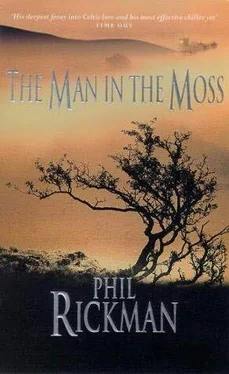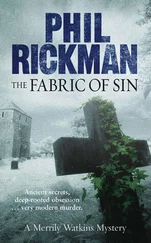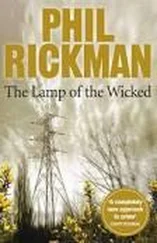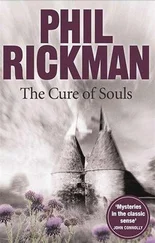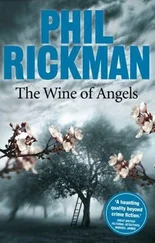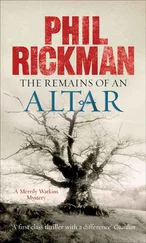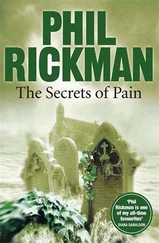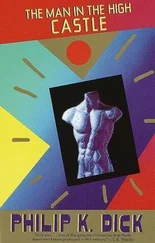Phil Rickman - The man in the moss
Здесь есть возможность читать онлайн «Phil Rickman - The man in the moss» весь текст электронной книги совершенно бесплатно (целиком полную версию без сокращений). В некоторых случаях можно слушать аудио, скачать через торрент в формате fb2 и присутствует краткое содержание. Жанр: Триллер, на английском языке. Описание произведения, (предисловие) а так же отзывы посетителей доступны на портале библиотеки ЛибКат.
- Название:The man in the moss
- Автор:
- Жанр:
- Год:неизвестен
- ISBN:нет данных
- Рейтинг книги:5 / 5. Голосов: 1
-
Избранное:Добавить в избранное
- Отзывы:
-
Ваша оценка:
- 100
- 1
- 2
- 3
- 4
- 5
The man in the moss: краткое содержание, описание и аннотация
Предлагаем к чтению аннотацию, описание, краткое содержание или предисловие (зависит от того, что написал сам автор книги «The man in the moss»). Если вы не нашли необходимую информацию о книге — напишите в комментариях, мы постараемся отыскать её.
The man in the moss — читать онлайн бесплатно полную книгу (весь текст) целиком
Ниже представлен текст книги, разбитый по страницам. Система сохранения места последней прочитанной страницы, позволяет с удобством читать онлайн бесплатно книгу «The man in the moss», без необходимости каждый раз заново искать на чём Вы остановились. Поставьте закладку, и сможете в любой момент перейти на страницу, на которой закончили чтение.
Интервал:
Закладка:
Naturally, The Man I'th Moss, the most westerly building in the village, on the very edge of the bog, is now under a great morass of muck. Selling it won't be a problem for Lottie Castle now; just a question of collecting the insurance, more than enough for a semi in Wilmslow.
At least thirty people died in the village that night; how many were simply victims of the Bog Burst may never be established. Which is, you will agree, just as well.
Quite a few are believed to have perished instantly out on the Moss, although, again, an exact number will probably never be known. Perhaps, over hundreds of years, the bodies will be disinterred, perfectly preserved no doubt, like our Man. Museum pieces – although perhaps not, because the Burst will be part of recorded history, so people will understand.
Or will they? Do any of us, even now, know precisely what happened, or why?
Except for Dr Roger Hall, who was seen by his assistant, Mrs White, to be heading for the Moss a short time before the Burst, most of those who died out there, in conditions which recall what I've read of the black horrors of the Somme, will remain unidentified. Many were likely to have been men and women long estranged from their families or disowned by their relatives because of the unacceptable practices in which they indulged themselves.
I know very little about so-called 'satanism', whether this is simply a convenient name we have given to those who seek personal power over others through supposedly supernatural means. Whether, as some say, they sacrificed newborn babies out on the moor in order to 'reconsecrate' the stone circle, I certainly don't know that. I do not want to know. All I do know is that extremism of any kind has never taken root in Bridelow, where a practical paganism and a humble Christianity have comfortably linked hands for so long. Many of the dead, sadly, were members of the fundamentalist Christian group called, if I have this right, The Church of the Angels of the New Advent. A large number of them, including their leaders, Mr and Mrs Christopher Montcrieff, heard the mighty thunder-roar and – believing it to be the dawning of the Day of Judgment, as forecast in the Book of Revelations – rushed out of the Rectory into the street with arms and (I would like to think) hearts upraised.
And, in seconds, were buried alive.
Not that many would have remained alive for long under that glutinous mess, most being crushed or drowned or suffocated very rapidly, mouths and noses and lungs clogged for ever. Some of those who did survive had been trapped in pockets of air under beams or walls or other protective bullwarks – although just as many were killed by masonry which was crumbling like crisp toast under the weight of hundreds of tons of peat. The first death, largely overshadowed by what was to come, remains officially unexplained.
The body in the BMW motor car did indeed prove to be that of my old friend Eliza Horridge. There will be an inquest, and it will probably record an Open Verdict, for Liz appears to have died not of injuries sustained in a car accident and the subsequent fire but some hours earlier and of hypothermia, due to exposure.
There is no question that Liz was suffering from an agoraphobia exacerbated by the fear that her presence was no longer welcome in Bridelow following the sale of the brewery to Gannons (I feel, therefore, that none of us who knew her is exempt from blame) and that, fearing the imminent reappearance of her old lover, John Lucas (whom I shall henceforth, to keep him at a distance, refer to by his adopted nom-de-plume of John Peveril Stanage) courageously overcame her illness to seek the aid of her one-time protector, Iris Wagstaff.
And when Ma – who then had herself but a short time left to live – failed to answer her door, Liz, feeling she dare not return home, became confused and wandered out on to the moor. I cannot bring myself to contemplate those cold, wet hours of mental agony and desperation before she succumbed to fatigue and lay down to the sad sleep from which she would never awaken.
I can only assume that her body was discovered on the moor by the sick, satanic brethren recruited by Stanage and his temptress and conveniently employed, most of them, by Gannons. And then (remember, we are not dealing here with wholly rational people) someone decided to put Liz's body into the car, from which they had removed Miss Moira Cairns, before destroying it. As the police could establish no link whatsoever between Liz and Miss Cairns, it was assumed the car had been stolen, but inquiries, I am told, are not yet complete.
As to the part played in this affair by the brewery… Well, its the economic heart of the village, it was obviously a target for someone with malice in mind
I realise now that perhaps the very first death of what we might, quite justifiably, call Bridelow's War, was that of Andy Hodgson, the young worker who 'fell' to the ground during the reassembly of the rusted pulley-and-platform mechanism used originally for winching sacks to the highest level of the brewery… that old malt store which was to become the unholiest of temples.
It is my belief that Andy Hodgson was himself a foundation-sacrifice to consecrate the malt store, in one of several corruptions of Celtic ritual performed in an effort to crumble the edifice of our tradition. The platform was later used, there can be no doubt, to winch up the body of Matt Castle, stolen from its grave for despicable necromantic purposes.
It was early days, though, and Andy's death was clearly less elaborate than that of poor Joel Beard, for whom I shall always have a certain respect, whose body remains buried somewhere out on the Moss, and perhaps far more deeply now than was ever intended.
The brewery, in an eastern corner of the village, much shielded by trees, was unaffected by the Burst. When a certain police officer paid a discreet visit the following morning he did not find what he apparently had been expecting. The remains of Matt Castle and Young Frank Manifold had disappeared.
A mystery? Not, I suspect, much of one. I think, if I were to question a few former regulars of The Man I'th Moss, particularly the estimable Mr Stanley Burrows, I might discover that, in the aftermath of the Burst and all the panic and confusion, the number of bodies in the bog had been surreptitiously supplemented.
The aforementioned policeman, an untypically thoughtful and philosophical officer approaching retirement, wishes it to be recorded that he was not in Bridelow on the night of the disaster and is unlikely to return. Although, I am informed, this officer has been undertaking some private 'stress-counselling' with a certain widow, in his own time. It was to be two days before the other bodies were discovered at the brewery. I shall come to this.
Those of us, including Benjie's dog and Ma's cats, who sought sanctuary in the church remained unharmed, although it was terrifying to feel the building almost rocking around us. Surrounded by rescue-squads in the wan light of early dawn, we could see peat four or five feet deep in parts of the churchyard, like an obscene black parody of snowdrifts.
Most of the graves had disappeared, just the heads of crosses showing. Our Sheila remained in position, looking perhaps more disgruntled than usual with her most public parts gunged up with peat.
Although their yards and gardens were submerged, the houses on the right of the street, had been spared the worst, and these included Ma Wagstaff's cottage, wherein we came upon something inexplicably strange.
Dic Castle was sitting in Ma's old rocking-chair in an atmosphere of unexpected tranquility. He had been brought to the house at his own request after Stan Burrows and a certain policeman had been unable to find Cathy Gruber.
Curiously calm, Dic had insisted they leave him alone, and with so many horrors competing for their attention they didn't argue for long.
Читать дальшеИнтервал:
Закладка:
Похожие книги на «The man in the moss»
Представляем Вашему вниманию похожие книги на «The man in the moss» списком для выбора. Мы отобрали схожую по названию и смыслу литературу в надежде предоставить читателям больше вариантов отыскать новые, интересные, ещё непрочитанные произведения.
Обсуждение, отзывы о книге «The man in the moss» и просто собственные мнения читателей. Оставьте ваши комментарии, напишите, что Вы думаете о произведении, его смысле или главных героях. Укажите что конкретно понравилось, а что нет, и почему Вы так считаете.
